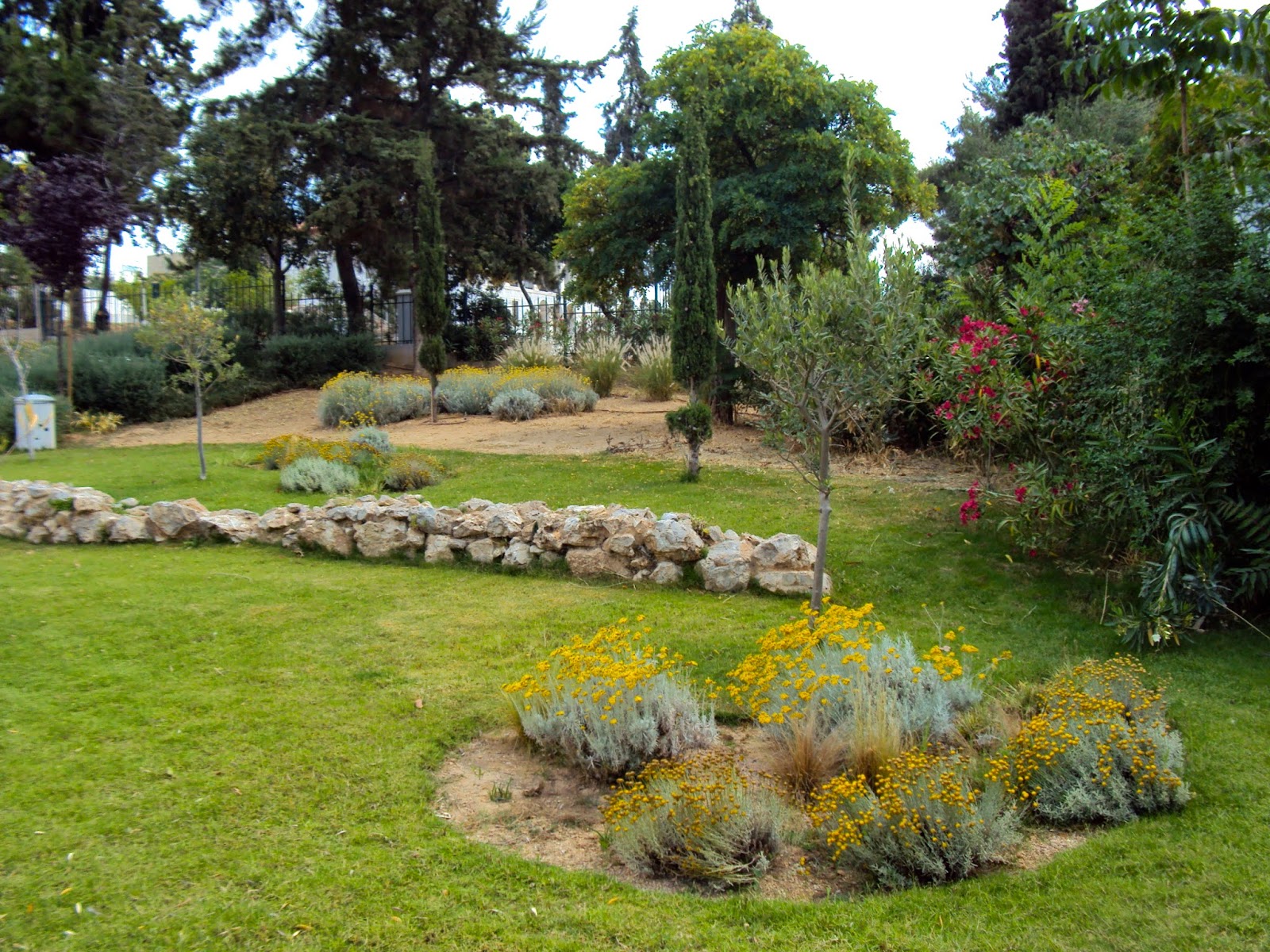 If Homer was correct in writing that “the
souls of the dead come to the Meadow of Asphodel where the phantoms of those
whose work is done abide" then surely Aristotle’s approving spirit must be
roaming here among the asphodel in the grounds of his lyceum.
If Homer was correct in writing that “the
souls of the dead come to the Meadow of Asphodel where the phantoms of those
whose work is done abide" then surely Aristotle’s approving spirit must be
roaming here among the asphodel in the grounds of his lyceum.
Founded by Aristotle in 335 BC., the lyceum
was known as a Peripatetic School (from the Greek word peripatos,
which means stroll) as it is believed that Aristotle liked to stroll through
the school’s tree filled groves discussing philosophy and the principles of
mathematics and rhetoric with his students.
This inspiring site was excavated by
archaeologist Effie Lygouri in 1996 and first opened to the public in June
2014. The idea is to integrate the
Lyceum into Athens every day life as part park, part historical reminder of the
city’s glorious past.
As this is the remains of a peripatetic
school it is especially meaningful to have created a natural looking landscape,
and as I entered from Rigilis Street one of the first things I noticed were tall
grasses rustling gently in the breeze and the sound of birdsong. Even the sound
of traffic on nearby Vasilissis Sophias Avenue became a distant hum as I got
closer to the excavations.
Aristotle was himself a student of Plato
and, although he was Plato's most promising pupil he held opposing views on
several fundamental philosophical issues. These beliefs led him to found his
own school and it was here in this incredibly significant
spot that he developed and taught his own method of inductive and deductive
reasoning, observing the workings of the world around him and then reasoning
from the particular to a knowledge of essences and universal laws.
The Lyceum was a school of unprecedented
organized scientific inquiry and, In a sense, the first major centre to put
forward the modern scientific method. It was from here, too, that Aristotle wrote
extensively on a wide range of subjects including politics, metaphysics, ethics
and logic.
It wasn’t all intellectual pursuits for the
fourth century BC scholar, however. Athleticism was highly valued and there are
the remains of baths, a gymnasium and a palaestrae where students would box,
wrestle and compete in the no holds barred pankrateion.
It seems as if history has almost come full circle here....with its well-tended walkways lined with
sweet smelling thyme, rosemary and lavender Aristotle’s Lyceum is once again a
spot for walking, an oases of calm, a setting for reflection, and still-
perhaps most importantly- a place for learning.




